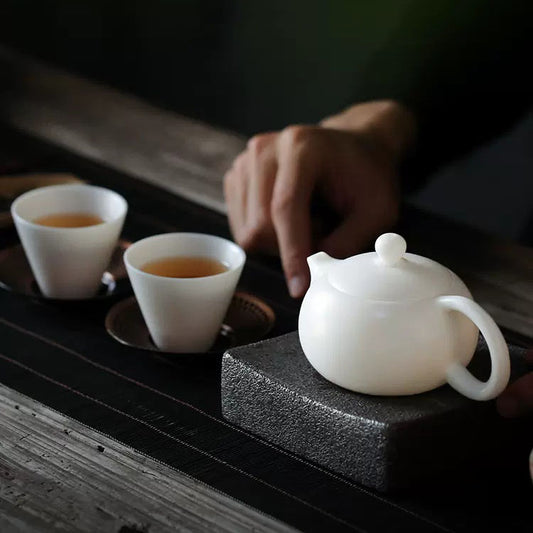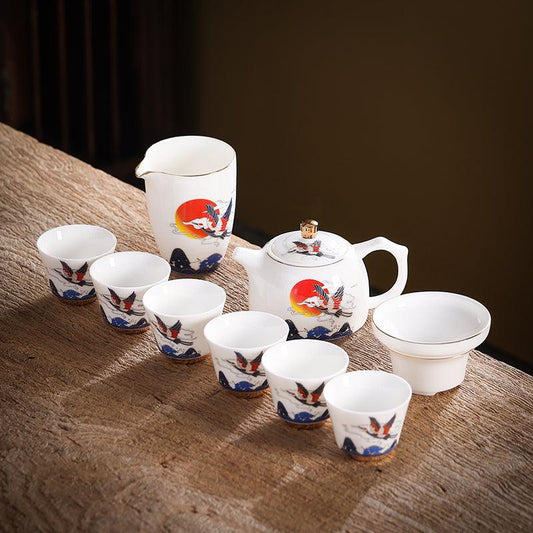Mutton fat jade porcelain is a traditional ceramic handicraft and is known as one of the treasures of Chinese traditional ceramics. It is loved not only for its unique shape and exquisite craftsmanship, but also for its delicate texture and unique patterns.

So, how are the patterns on Mutton fat jade porcelain tea sets formed? This requires exploring both the production process and special techniques.
1.Production process
The production process of Mutton fat jade porcelain tea sets is very complex and requires multiple production and firing steps. First, high-quality raw materials need to be selected and undergo a series of processes such as screening, washing, and purification to ensure the quality and purity of the Mutton fat jade porcelain tea sets. Next, the shaping process is carried out, usually by hand or mold making. Hand-made production requires skilled craftsmanship and experience, while mold making requires precise tools and instruments to ensure the quality and shape of the Mutton fat jade porcelain products.
After shaping is completed, the first firing is carried out, which is also called "bisque firing." Temperature and time control are important during firing to avoid problems such as cracking and deformation of the Muttonfat jade porcelain products.
Next is the step of outlining the pattern, which is an important step in forming the pattern on the Mutton fat jade porcelain products. This step is also called the sketch phase, which is the first step in forming the pattern. In this step, craftsmen can use tools, such as brushes, to carve lines and outlines on the surface of the bisque. This process needs to be done manually and requires rich experience and exquisite skills to ensure the accuracy and beauty of the lines.

2.Special techniques
The patterns on Mutton fat jade porcelain tea sets also use special processing techniques to showcase unique artistic effects. This technique is called "relief technique" or "decal technique."
The relief technique is a special production process in which tools are used to carve patterns on the surface of the Mutton fat jade porcelain product before glazing. The product is then fired for the first time to connect the pattern with the bisque surface and create a raised effect. Finally, the glaze surface is processed and the product undergoes a second firing. This technique creates a three-dimensional effect, making the pattern more delicate and exquisite.

The decal technique involves printing pre-drawn patterns on specially made paper, which is then applied to the bisque surface and fired for the second time to fix the pattern on the bisque surface. This technique not only showcases the details and beauty of the pattern but also creates a sense of depth on the porcelain surface.
In summary, the patterns on Mutton fat jade porcelain tea sets are formed through multiple techniques and complex production processes. It not only showcases the exquisite and unique traditional ceramic craftsmanship but also integrates modern art elements, fully demonstrating the charm and pride of Chinese traditional culture.





